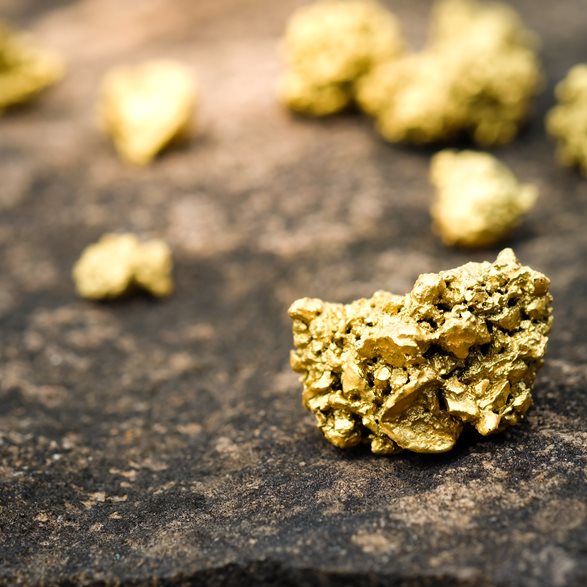A groundbreaking study has provided new insights into the geological processes that transport gold from the Earth’s mantle to its surface. By uncovering the chemical and physical mechanisms at work deep within the planet, researchers have clarified the origins of some of the world’s richest gold deposits. This research not only advances our understanding of Earth’s geology but also offers valuable guidance for mining companies seeking to optimize gold exploration.
Key Mechanisms of Gold Mobilization
- Sulfur as a Transport Agent
The study highlights the critical role of sulfur in mobilizing gold within the mantle. At depths of 50 to 80 kilometers beneath active volcanoes, molten mantle rock contains sulfur species capable of forming stable complexes with gold. Specifically, gold combines with three sulfur atoms to create gold-trisulfur complexes, which are highly soluble in molten materials. This solubility allows gold to travel through the mantle’s molten regions with relative ease. - Subduction Zone Dynamics
These processes are particularly active in subduction zones—regions where one tectonic plate slides beneath another. The immense heat and pressure in these zones trigger chemical reactions that liberate gold and sulfur from the subducting plate. As magma generated in these zones ascends toward the surface, it carries gold-trisulfur complexes, concentrating gold in the crust. Notably, the Pacific Ocean’s “Ring of Fire,” with its numerous active volcanoes, exemplifies a prime location for such gold transport. - Gold’s Path to Surface Deposits
As the magma cools and solidifies closer to the Earth’s surface, gold precipitates out of the molten material, forming veins and deposits. Over millions of years, tectonic activity, erosion, and weathering further expose these deposits, making them accessible for human discovery and extraction.
Implications for Gold Exploration
- Refining Exploration Techniques
The study provides a more precise understanding of the geological conditions necessary for gold deposit formation. This knowledge enables mining companies to target regions with the right combination of subduction zone dynamics, mantle chemistry, and sulfur availability, potentially reducing exploration costs and increasing success rates. - Advancing Predictive Models
By incorporating the role of sulfur and subduction zones into exploration models, geologists can better predict the locations of undiscovered gold deposits. This could lead to the discovery of new, previously overlooked mining regions, particularly in tectonically active areas. - Sustainability in Mining
Understanding the processes that form gold deposits allows for more strategic and environmentally conscious exploration. Targeted exploration minimizes the environmental impact of mining activities by focusing efforts on areas with a higher likelihood of success.
Broader Geological Insights
- Linking Mantle Chemistry to Surface Resources
This study underscores the interconnectedness of deep Earth processes and surface mineral wealth. The mantle’s chemical composition, driven by tectonic activity, directly influences the availability of economically valuable resources like gold. - Insights into Earth’s Evolution
The findings also contribute to broader questions about Earth’s geological evolution. By tracing how elements like gold migrate through the planet’s layers, scientists can refine their understanding of the processes that have shaped Earth’s crust over billions of years. - Relevance to Other Metals
The mechanisms described in this study may also apply to the formation of other precious and base metals, such as copper and silver, which are often found alongside gold in ore deposits. Future research could expand on these findings to enhance exploration strategies for a wider range of resources.
Conclusion
This study provides a detailed explanation of how gold travels from deep within Earth’s mantle to the crust and eventually to the surface. By revealing the role of sulfur and subduction zone dynamics, the research enhances our understanding of both geological processes and mineral resource formation. These insights not only contribute to academic knowledge but also offer practical applications for the mining industry, paving the way for more efficient and sustainable gold exploration.





